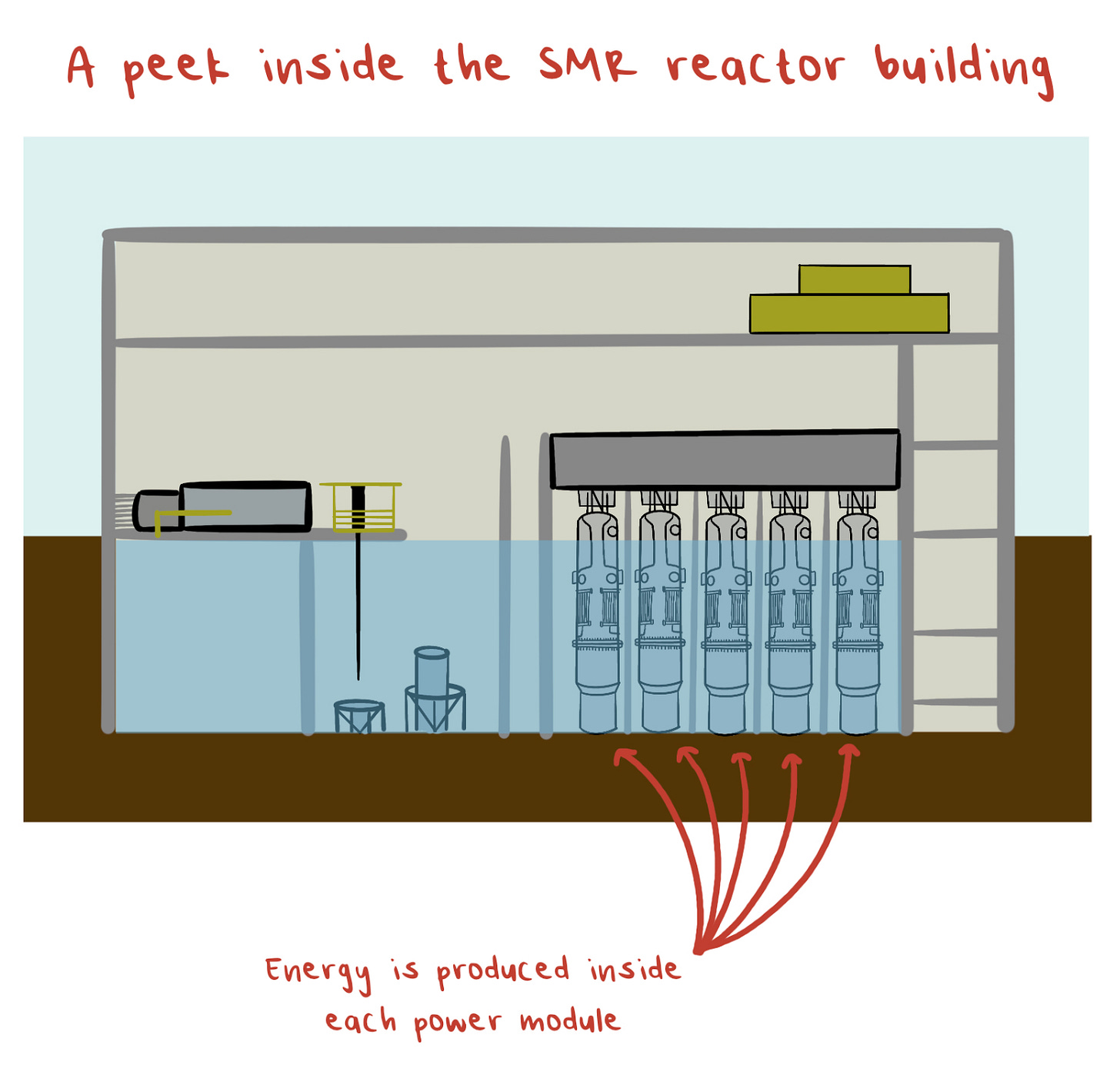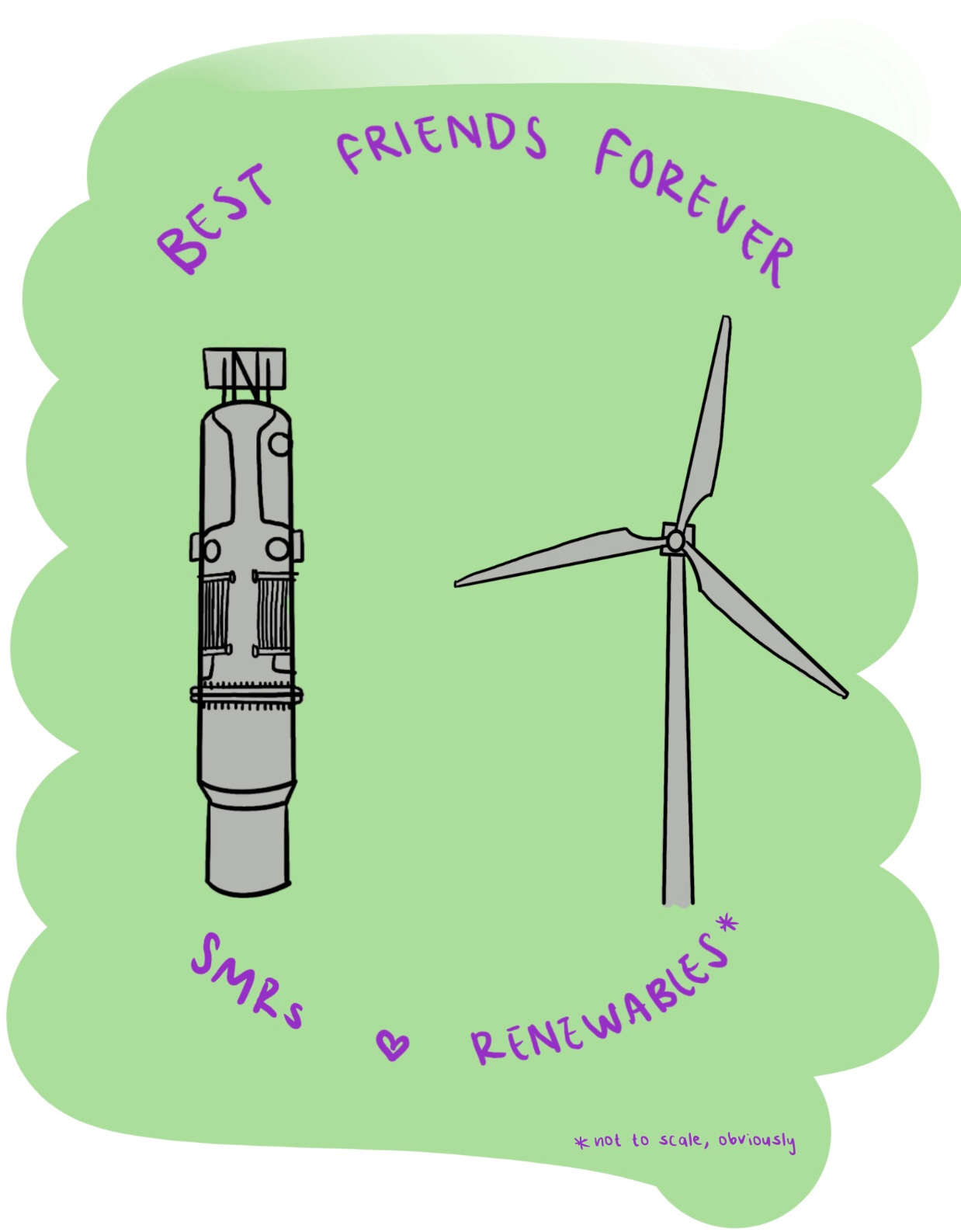This week, nuclear energy enthusiasts got their first big win in a while: NuScale’s Small Modular Reactor (SMR) design was certified by the US Nuclear Regulatory Commission (NRC). This is a big deal for small reactors — this NRC certification is the first of its kind in US history.
There are a lot of arguments that are being made by both nuclear advocates and critics in response to the news. We aren't going to get into all of that. But on both sides, we’re noticing a serious gap in the discussion: nobody is talking about what SMRs could mean for people, cities, and climate resilience.
So, even though we’re certainly not nuclear energy experts, we’re going to attempt to map out some of the potential climate resilience benefits that we think SMRs could provide for people in the places they live and work. And though this milestone is happening in the US, operationalizing SMRs could have a particularly important role in building more climate-friendly and resilient energy infrastructure across the world.
But first, a very quick primer on Small Modular Reactors.

The easiest way to explain SMRs is to break down their name. At their core (ha, get it?), they’re similar to the nuclear energy we started generating after World War 2, with a couple of extra adjectives:
Small: SMRs typically only generate up to 300 megawatts of energy per module (whereas a traditional plant produces more than 1000 megawatts). They also take up less space than traditional nuclear power plants, though the exact amount depends on the model you look at.
Modular: The power generation in SMRs happens in individual self-contained modules that can be manufactured in a factory and then installed at their final site. This is cool because a plant can use just one module, or add multiple modules to increase the amount of energy it produces. Bonus points: as we get better at producing these modules, the cost of manufacturing and repairing / replacing them should decrease over time.
Reactors: NuScale’s SMRs employs traditional nuclear fission using a system called pressurized water reactors. This means they split atoms in a highly pressurized core, which creates really hot water. That hot water is then used to create steam, which spins a turbine, which makes electricity!
How could SMRs contribute to climate resilience?
Reliable, 24/7 energy.
A popular argument against solar and wind energy is the age old “well, what do you do when the sun doesn’t shine and the wind doesn’t blow?” Nuclear, on the other hand, can run constantly. This doesn’t mean that nuclear should be a total replacement for true renewables like solar and wind. However, we do think it makes a great teammate to those intermittent energy sources through systems like Nuclear-Renewable Hybrid Energy Systems.
These systems allow for multiple sources of energy generation, which is inherently more resilient to changing weather or operating conditions. They may even prove more reliable than our current go-to power systems during extreme weather conditions. (Remember, during Texas's 2021 freeze, natural gas power systems went offline when pipes froze, cutting off fuel flow. This is ironic, since natural gas is usually promoted for its reliability. Nuclear-renewable hybrid systems could be a better bet in similar conditions!)
It can go (almost) anywhere.
SMRs aren’t dependent on regional weather patterns or oil pipelines, so they can be installed in almost any region in the world. Thanks to their size and safety features, they will likely have much smaller Emergency Planning Zones (EPZ) than traditional nuclear plants; this means that SMRs could be placed much closer to the cities and towns that will actually use their power. This may not seem like a big deal, but it has major implications for the use of transmission lines and overall climate resilience.
You see, the energy system in the US currently relies on 3 gigantic grids that were mostly built in the 1950s and 1960s. These aging grids are becoming less and less reliable as we get more weather-related power outages each year. (Like… a lot more). Most of these weather-related outages are caused by damage to long-range transmission lines and substations that are used to move electricity across long distances.
But what if you didn’t have to move electricity across those far distances? If you produced your energy locally through an SMR, you wouldn’t have to move your energy on long-range transmission lines, and you’d probably be less likely to suffer from a power outage if some crazy climate event were to damage those transmission lines. Resilience!

It can power other climate solutions in unexpected ways.
Not all of the energy that SMRs produce go to making electricity; some of that energy is released as “process heat”. But that process heat doesn’t all go to waste — there are a lot of ways to use it! For example:
🌡 District heating, which can help us adapt to extreme cold events without increasing our utility bills. This is already being done with traditional nuclear in China and Russia.
💧 Water desalination, which can help us adapt to droughts. This is already being done with traditional nuclear in Japan!
🏭 Glass, cement, and even steel manufacturing with a low carbon footprint! (This requires high temperature process heat. NuScale’s process heat isn’t hot enough for this, but other proposed SMR models could work.)

Only time will tell!
Though the NRC’s certification of NuScale’s design was a major milestone, even if everything goes right, we won’t see this SMR producing energy at the Idaho National Lab until 2029. Plus, there's the looming question of regulation and permitting.
We don't need to worry about all of that now, though. Instead, we're celebrating this win for nuclear, because with the right planning, it can be a win for climate resilience. We hope that before 2029, there will be other advancements made in grid resilience, transmission lines, energy storage, and even water desalination. Until then, we're keeping our eyes on how SMRs can help us make our cities and remote towns more climate resilient!





